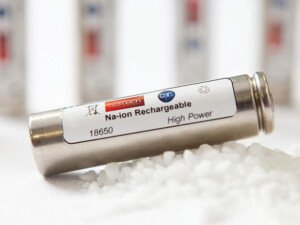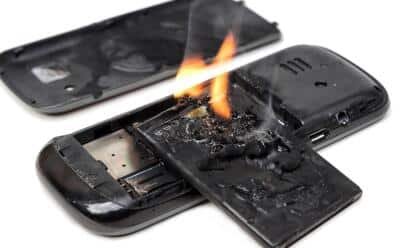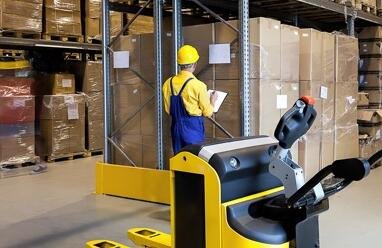Will Sodium Batteries Replace Lithium Batteries?
In recent years, most of the fires in related energy storage power stations have been caused by the explosion of lithium batteries. Lithium batteries are so unsafe, why should they be used? The reason can’t be simpler. From the perspective of overall performance, lithium-ion batteries are still the best among all battery technologies. With the continuous emergence of new battery technologies, sodium batteries have gradually entered the public eye. In contrast, the safety of sodium batteries is much higher than that of lithium batteries.In tests such as overcharge and discharge, short circuit, acupuncture, etc., it can be achieved without fire or explosion. The biggest advantage of sodium batteries is not only safety, but also low cost. In the recent CCTV “Dialogue”, Huang Xuejie, vice chairman of the China Battery Industry Association, mentioned that the cost of sodium-ion batteries is lower. Replacing all lithium in lithium batteries with sodium can reduce the cost by 30%. This 30% is a great advantage.Often a price difference of a few percent may determine the life and death of an industry.
In July 2021, a press conference in CATL pushed the sodium-ion battery technology from behind the scenes to the front of the stage. According to the plan of the CATL the sodium-ion battery industry chain will be built and industrialized in 2023. The increasingly popular concept of energy storage has made sodium-ion batteries instantly the brightest star sought after by the energy storage circle and the investment community.
 In fact, basic scientific research on sodium-ion batteries has been carried out for many years.
In fact, basic scientific research on sodium-ion batteries has been carried out for many years.
In 1979, French scientist Armand proposed the concept of “rocking chair battery” and started the research on lithium-ion and sodium-ion batteries. Since then, the research on sodium-ion batteries has stagnated. It was not until 2000 that the discovery of hard carbon anode materials ushered in a turning point for sodium-ion batteries.
Reducing dependence on lithium resources and developing new low-cost and high-safety battery systems have always been the driving force behind the inexhaustible exploration of sodium batteries. However, the large ion radius means that sodium batteries have innate shortcomings in energy density. As a result, backup power supplies, low-speed electric vehicles, energy storage, and all other scenarios where lead-acid batteries are being used will become the home field that sodium batteries will soon occupy. In other words, sodium batteries are very likely to replace lead-acid batteries. So, will sodium batteries replace lithium batteries? In this article, we will give our points of views for this question. Before we give out the answer, we need to know something about sodium battery.
Here below is a table to compare the differences between Solid Battery and Lithium Battery. Hope it is helpful for you.
| Feature | Sodium Battery | Lithium Battery |
|---|---|---|
| Energy Density | Lower energy density compared to Lithium batteries | Higher energy density compared to Sodium batteries |
| Cost | Cheaper than Lithium batteries | More expensive than Sodium batteries |
| Safety | Sodium batteries are safer, as they do not explode or catch fire easily | Lithium batteries are more prone to catching fire or exploding |
| Environmental Impact | Sodium batteries are more environmentally friendly than Lithium batteries as they use abundant and easily available materials | Lithium batteries require rare metals and minerals, which can have a negative impact on the environment |
| Performance | Sodium batteries have lower performance compared to Lithium batteries | Lithium batteries have higher performance compared to Sodium batteries |
| Rechargeability | Sodium batteries have a shorter lifespan and can be recharged fewer times compared to Lithium batteries | Lithium batteries have a longer lifespan and can be recharged more times compared to Sodium batteries |
| Application | Sodium batteries are suitable for large-scale energy storage applications | Lithium batteries are suitable for portable devices and electric vehicles |
Sodium-ion batteries have low cost and high safety, but they have never been used on a large scale.
WHAT HAS BECOME THE SHACKLE OF THEIR DEVELOPMENT?
(1) The energy density of sodium ion batteries is low.It is only 100-150Wh/kg, while the energy density of lithium energy is 120-180Wh/kg.This means that for batteries of the same size, sodium-ion batteries can store much less energy than lithium-ion batteries. In layman’s terms, this makes the “battery life” effect of sodium batteries used in new energy vehicles and energy storage power stations inferior to lithium batteries. It is far more difficult to meet the daily needs of all aspects. It is a major point that the popularization of sodium batteries needs to overcome.
(2) The number of cycles of sodium-ion batteries is low, usually more than 2,000 times, while the cycle life of lithium batteries is usually more than 3,000.The number of cycles is related to the service life of the battery. No one wants to use the battery of the product to decay badly, so it is difficult to be widely accepted in engineering applications.
(3) The industrial chain is immature.The supplier system of the industrial chain such as positive and negative electrode materials and electrolytes for sodium-ion batteries has not yet formed a scale, and the upstream prices are higher, and the cost advantages cannot yet be revealed.
These three defects make sodium-ion batteries greatly restricted in use scenarios, especially in the field of electric vehicles.
Is the Technology of Sodium-ion Battery Mature?
It is understood that sodium-ion batteries, like lithium batteries, are composed of a positive electrode, a negative electrode, an electrolyte and a diaphragm. Compared with lithium ions, sodium ions are larger in size and have more stringent requirements in terms of material structure stability and kinetic properties. This is also the reason why sodium-ion batteries have been difficult to commercialize.
WHAT IS THE DIFFERENCE between the manufacturing equipment of sodium batteries and lithium batteries?
The manufacturing equipment of the two materials is almost the same. The only difference is to change the raw materials used to make the battery. The ternary materials of lithium batteries or lithium cobalt oxide(LCO) are all controlled by engineering electricity and solid phase methods. The raw materials invested in the cathode material production line are mainly lithium carbonate, nickel oxide, benzene acid or metal salt plus lithium carbonate or lithium hydroxide. The metal salt in the sodium battery remains unchanged, that is, lithium carbonate or lithium hydroxide is replaced with sodium carbonate and sodium hydroxide, but the entire synthesis process is the same.
For positive electrode manufacturers, the current lithium battery positive electrode production equipment can be basically used, but some adjustments need to be made to the specific production parameters and conditions. But the equipment is basically the same. The difference in graphite will not be too big. The electrolyte is basically similar, that is, the dissolved LiPF6 is replaced with NaPF6, but it is not much different from the entire lithium battery production line.
Will Sodium Batteries Replace Lithium Batteries?
NO, sodium batteries would not replace lithium batteries in short time. It is generally believed in the industry that sodium-ion batteries and lithium-ion batteries are COMPLEMENTARY to each other rather than substitutes. Due to the low energy density of sodium-ion batteries, they are more suitable for use in medium and low-speed electric vehicles and large-scale energy storage.
As the industry increases investment, the technology matures, and the industrial chain gradually improves, cost-effective sodium-ion batteries are expected to become an important supplement to lithium-ion batteries, especially in the field of fixed energy storage. It has good development prospects.
The requirements for batteries are mainly divided into higher capacity, faster charging speed, safer and lower cost dimensions. In his view, except for the temporary inability to meet the higher capacity, other aspects are the advantages of sodium-ion batteries. At this stage, sodium-ion battery products will be mainly used in application scenarios below 150 watt-hours/kg, which can alleviate the limited development of energy storage batteries due to the shortage of lithium resources to a certain extent.
“There is no obvious bottleneck in the large-scale mass production of sodium-ion batteries, and they will quickly seize the market with their own characteristics in specific markets. ”Sodium-ion batteries are positioned as the most economical high-safety energy storage batteries. After large-scale production, the performance of lithium-ion batteries will be realized at the price of lead-acid batteries.
The development of sodium-ion batteries is a process of self-breakthrough. Sodium-ion batteries will inevitably face off with lithium batteries in the end, competing for competitiveness and snatching the market. Although the CATL has given a clear timetable, the industrialization of sodium-ion batteries also needs to overcome the difficulties of technical performance, industrial chain, mass production and cost.
The innate lack of energy density of sodium-ion batteries is well known, and the continuous optimization efforts have never stopped. Increasing the energy density from 160Wh/kg to 200Wh/kg has become the research and development goal of the second generation of sodium-ion batteries in the CATL.
How Long will it Take for the Industrialization of Sodium Batteries?
For energy storage applications, the importance of improving cycle life cannot be ignored. According to the published information, the cycle life of existing sodium-ion batteries can reach 5,000 times, but it is still much lower than the current cycle life of commercial lithium iron phosphate batteries of 8,000-10,000 times. If sodium-ion batteries want to become the backbone of the energy storage field, they still need to continue to experience in terms of technical performance.
INDUSTRIAL CHAIN:
According to the information disclosed by various enterprises, the production of sodium-ion batteries can basically follow the lithium battery production equipment that has been mature and applied. There are no major differences in the key processes in each link, and the deployment of production capacity can be quickly realized. However, in terms of key raw materials such as positive electrode, negative electrode, diaphragm, electrolyte, and collector, because brand new sodium-based materials are involved, it is necessary to develop new materials and build a brand new industrial chain system.
MASS PRODUCTION AND COST REDUCTION:
Building production lines, increasing production capacity, and achieving stable mass production are the 9981 difficulties that any technology industrialization must experience, and the experience of sodium-ion batteries has just begun. Low raw material prices are the core advantage of sodium-ion batteries to reduce costs. Before the industrial chain and production system were sound, the cost of sodium batteries did not have an advantage over lithium batteries.
Conclusion
So far, according to our explorasion, sodium battery technology is not mature enough, thus lithium batteries will still be the main energy storage supply in the world today. On the other hand, as we all know that, lithium battery has so many advantages and features which can completely meet nowadays machine’s demand. As for advantges, in this blog, we won’t illustrate too much. If you are interested about our lithium battery or you have some plan to custom for your device or project, you can contact us to answer your questions as much as we can. Hope you have a nice customized process.
Prev Article: All Things You Need to Know about Lithium Trolling Motor Battery
Next Article: All Things You Need to Know about NTC Thermistors



Leave A Comment